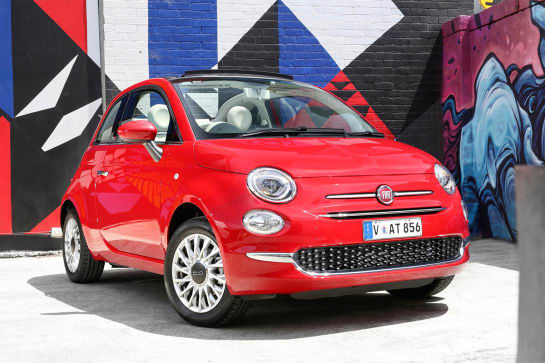Micros cars have just never had the best of reputations here in Australia. In Europe, for example, they’re embraced by people of all ages as the perfect way to navigate cramped cities - and why not? They’re small, so they’re easy to park, easy to see out of, and they’re usually pretty economical on fuel, too.
But in Australia? Not so much. Here they’re largely a first-car consideration; a mere stepping stone on the way to bigger, better and more expensive wheels. Which is why some of the best micro cars on the planet aren't even offered here (and the ones we do sell are disappearing so fast it's hard to keep up).
In Europe, you can have a Renault Twizy, for example; a two-seat, all-electric motorbike-cum-mini car that buzz about France's biggest cities like flightless locusts.
Or you can get the Up! (their punctuation, not mine), which is now also available internationally in super-cool GTI guise. It's a really very good city car solution from Volkswagen that sunk like a three-cylinder stone when it launched in Australia a few years back, and has since been removed from sale.
The list goes on, of course, but it all points to the same thing; Australians just don't get city cars.
What is a micro car? Well, the actual definition of what makes a micro car changes the world over; in some countries, an engine of 700cc or less is required to qualify, while in others, it relates to an insurance category. But the general thrust remains the same; diminutive proportions, small engine, even smaller price.
In Australia, our smallest passenger cars are split into three groups; small cars (think the Mazda3), light cars (think Volkswagen Polo), and the smallest of the lot; micro cars (like the Kia Picanto).
And they have never been better, or better value. One the of the biggest game-changers in this segment has been the introduction of Apple CarPlay and Android Auto, allowing you to use your phone’s functions (navigation, playlists, podcasts) through a car’s touchscreen. They’re functions that used to cost the world, but now appear (or should appear) as standard in our cheapest cars.
And so, as our cities only get more crowded, our parking spots more scarce and our fuel more expensive, there has never been a better time to make a micro car your primary set of wheels. So without further ado, we present to you a list of the best of the micro cars Australia bunch.
To keep things simple, we’ll keep our micro-car list to those featured in the official industry list. You’re not exactly spoiled for choice either, with just three main micro cars for sale in Australia to choose from. But should you drill down into the detail, there’s gold in them there hills. Pick the right one, and you’ll be getting jumbo value for a mini car price.


















Comments